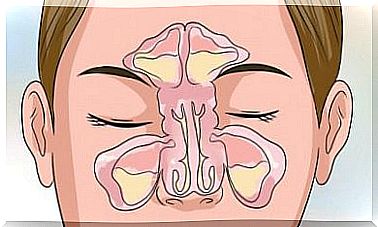Interesting Facts About Heart Sounds
Most heart sounds are harmless and do not require treatment. In some cases, however, further examinations and regular check-ups are necessary to rule out serious heart disease.

Heart murmurs are flow or valve noises that are created in the heart by vibrations or eddy currents that influence the calm flow of blood. In other words, they are sounds that occur during the heart cycle. The doctor can hear these sounds by listening to the heart with a stethoscope.
The unusual heart sounds are caused by vibrations and eddy currents that affect the calm flow of blood through the heart and large blood vessels.
Heart murmurs can occur from birth or during life. If they are already present at birth, one speaks of a congenital disorder.
A disease does not necessarily have to be hidden behind these noises, as many adults with heart murmurs have healthy hearts. But the noises could indicate an illness and must therefore be checked.
Properties of heart murmurs

The properties of heart sounds are related to their volume, their sonorous frequency, their localization in the chest and their localization within the cardiac cycle, i.e. they can be systolic or diastolic sounds.
The volume of the noises also depends on the volume of blood that is responsible for flow turbulences or stress gradients that create these turbulences. It is important to know that the level of the heart murmur does not necessarily indicate the severity of the heart disorder.
How are heart murmurs classified?
The most commonly used classification was introduced by Levine in 1933. This expert oriented himself on the basis of the volume and divided it into 6 degrees:
- Grade 1: Very quiet, hard-to-hear noises. The doctor has to listen to several heart cycles to hear these sounds.
- Grade 2 : Soft, but immediately perceptible noises when the stethoscope is put on.
- Grade 3: Moderate volume of noises that are not accompanied by vibrations. This means that there is no palpable buzzing.
- Grade 4 : Intense noises with a palpable buzzing sound that are louder than the sound of breathing.
- Grade 5: Very loud noises with a palpable buzz. These noises can already be heard when the stethoscope is only partially placed on the chest wall.
- Grade 6 : Very intense noises that can be heard when the stethoscope is raised slightly from the chest wall (distance noise).
Further classification options

In addition to the classification according to the volume level, other aspects can also be taken into account in the classification. Taking into account the duration, the division into systolic and diastolic heart murmurs is made.
If we take the noise development into account, the quieter, louder or constant volume is documented, although mixed forms are also possible. As far as localization is concerned, there are various auscultation points in the anterior region of the thorax to identify heart murmurs:
- At the second intercostal space on the right side,
- between the second and fifth intercostal spaces on the left side,
- in the fifth intercostal space at the level of the medioclavicular line (mitral valve).
Furthermore, the heart murmurs can be classified based on their transmission. In this case, an assessment is made as to whether the noises can also be heard through other vessels or body regions. Usually the sound is propagated in the direction of blood flow.
In addition, a low or high tone is differentiated. In addition, the quality of each heart murmur can be different, i.e. whether the noises sound musical, rough, rumbling, buzzing, etc.
Treatment of heart murmurs

Most heart murmurs are harmless and do not require treatment. However, in some cases further examinations and regular checkups are needed to rule out serious heart diseases that have not yet been diagnosed.
If the heart murmurs are caused by a disease, treatment will focus on that causal pathology. For example, if the heart murmurs are caused by fever or hyperthyroidism, they will go away once these disorders have been treated.
In some cases, drug treatment is not enough. The doctor may initiate surgery if, for example, there is a damaged or perforated valve:
- Valvuloplasty with a ball
- Annuloplasty
- Repair of the support structure
- Open heart surgery
- Repair of the valve
If there is a suspicion of a heart murmur, you should definitely get a medical examination as soon as possible. The doctor will then determine the causes and, if necessary, initiate appropriate therapy.









